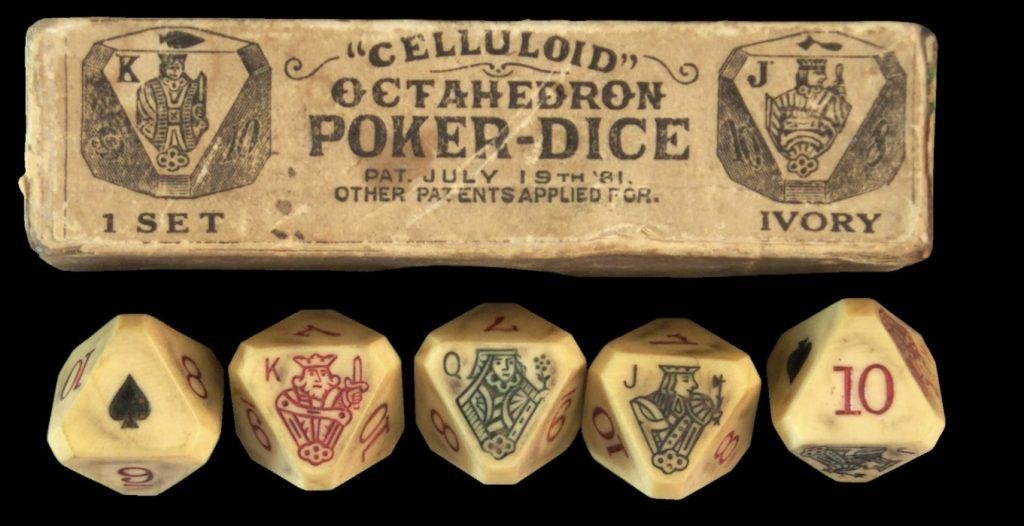The History of Polyhedral Dice in Gaming Part II
Well I didn’t think I would be writing a follow up to the first article about The History of Polyhedral Dice in Board Gaming this quickly. But sleuthing around the internet has uncovered dice and game that predate games listed in the first article. Many of these new firsts may need an asterisk or two, but I will leave that up to you to decide.
Read History of Polyhedral Dice In Board Games Part 1
The History of Polyhedral Dice In Board Games
First up, Polyspheres Zazz, a simple game but one that uses all 5 polyhedral dice (d4 d6 d8 d12 d20). Copyright is stated as 1963 (directly corresponding to U.S. Patent#3,208,754, “DICE GAME WITH A TETRAHEDRON DIE,”
Filed by Fredda F. S. Sieve. It includes five platonic solids, and an icosahedron numbered 1-20.) meaning this set of polyhedral dice could hold several distinctions:
- The oldest version of the standard 5 piece polyhedral dice set.
- The oldest game to introduce the modern d8, d12, and d20.
- The first d20 numbered 1-20
- The first game to utilize all 5 dice from the standard polyhedral set. This predates D&D by over a decade.
Boardgamegeek.com now has a listing for Zazz
A look at the d4 reveals an issue, as it has only one number per side. However the d4 is not meant to show one number according to the rules, but rather 3 numbers. In order to use the d4 for “tradional”d4 purposes using the Zazz dice, the number rolled on the d4 would need to be the face on the bottom, or the number you cannot see.
Ms. Sieve was a pianist by trade. How that translated into polyhedral dice is unknown, but I believe Zazz earns her the distinction of Godmother of Polyhedral Dice.

D20 & d12 Update
The oldest d20 & d12 polyhedral dice are in the Louvre. Both dice date to around 200 BC.


d8 Update
While not exactly the same shape as modern d8 dice, these d8 poker dice with quite knobby corners date from 1881. Note that they are also made of ivory before the ivory market became taboo.

The Earliest d10 Game & Daily Number Lotteries
The earliest d10 polyhedral dice I could find come from around 1938 from Mason & co. Their Stock Exchange Dice are d10. Players rolled 3d10 to generate a number from 000 – 999. Payout was 600-1 if a player bet on the right number. Does this sound like anything you know? Yes, this would seem to be a very early dice version of what is now the modern day daily number lottery in many US states!




JSA d20 – How to use the first d20 dice for engineering purposes
Finally the last bit of interesting info uncovered for this history of polyhedral dice in board games update, a pdf on how to use the original JSA d20 dice! As you know, they were made for quality control and testing, not for gaming. This pdf explains their usage and why they were needed. A fascinating read even if it is a bit dry and scholarly.
How to Use JSA d20 dice for quality control testing

First d10 In Board Games Question
One final note concerning the first appearance of a d10 in a board game. Star Frontiers by TSR was released at the same time as the Moldvay edition of Dungeons & Dragons. Star Frontiers included 2d10 as part of the contents. Thus a little more research is needed to determine which product TSR released first. I am hoping a post on Acaeum.com will solve the mystery. If the mystery is solved by an astute collector or former TSR person, I will update the posts.

